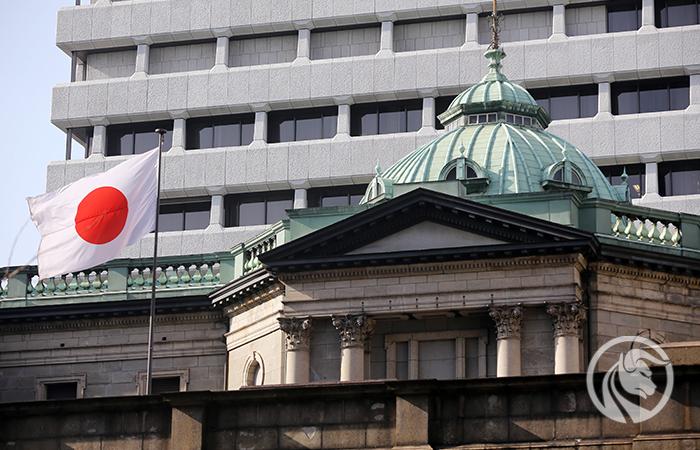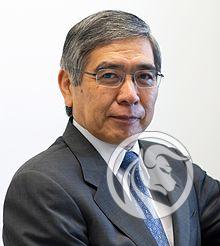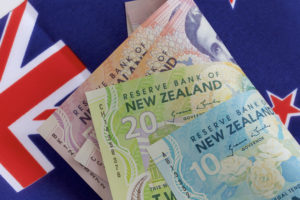Bank of Japan (BoJ) - the creator of the strength of the yen
Nippo Ginko from the Japanese word means Bank of Japan. This institution is responsible for the creation and implementation of one of the world's leading currencies, namely the yen. Its roots go back to the feudal times, where after numerous changes and times unstable in terms of economy, it has survived until today.
A brief history of the bank
Officially, it was founded in 1882 in the Meiji period (the Age of Light Governments). Its history, however, goes back to the more distant feudal times. In fact, almost 1867 year in Japan, about 150 banks were created, which dealt with the issue of banknotes. It was only when the period of rapid social and political changes in the country of the flourishing cherry came into being in the 1871 year of the Japanese yen. Its task was to unify the money system, ie to oust the currencies of individual territorial units (hans). Eventually, this problem was tackled by 1899 of the year.
At the beginning, the Bank of Japan was founded by Prince Matsukata as a private institution. The book fulfilled the function of the then finance minister. The institution was to serve as an element of the modernization of the financial system. At the time of its inception, it had 10 capital of millions of yen and a license for 30 years of operation. By 1942, the capital was expanded to 100 million yen. Around the same period, a number of reforms known as the Bank of Japan Act were introduced.
The next significant changes took place after the Second World War, where the economy began to recover from the devastating years. More specifically, in the 1997 year, Japan amended the law that applied to the central bank. This reform was aimed at introducing such changes to increase the transparency and credibility of its operation. Since then, reports on the Council's meetings, statements on individual decisions and reports on the tasks performed have been published.
Tasks and functions
BoJ is one of the few banks that is dependent on the government. This is evidenced by the entry in the law: "In recognition of the fact that currency and monetary control are components of general economic policy, the Bank of Japan should always be in close contact with the Government and exchange opinions with it, so that its monetary and monetary control will harmonize with the basic assumptions of the government's economic policy."
His main tasks include, among others, servicing commercial and central banks belonging to other countries. In addition, the BoJ's competences include managing monetary policy and ensuring price stability. What's more, it is responsible for the issue of banknotes and coins. Is a "final" lender for banks in danger of bankruptcy. It provides analyzes and statistics that it publishes on its website. All the tasks and functions that he or she makes consist of smooth financial management. Thanks to its strong position in the country, it is an important institution on the international arena.
Authorities of the Bank of Japan
The Bank of Japan consists of 15 departments, 32 branches and 14 local offices in the state. It also has several branches outside the country.
The bank's main authorities are: the president, two vice presidents, executive auditors (three, may be less), executive directors (six) and councilors. The president and vice presidents are appointed for the same terms for the period of 5 years. Executive auditors are appointed by the government for the period 4 years. However, other members of the bank's authority are elected and appointed by the Minister of Finance at the request of the Political Council. The Political Council is a very similar body to the Monetary Policy Council at the NBP. It consists of the president, vice presidents and six other board members. Of these, the chairman is elected. This body controls the officials and is the most important decision-making part regarding monetary control. The current president of the bank is Haruhiko Kuroda.
The seat of the Bank of Japan is located in the capital of the country - Tokyo. It is located in the Nihonbashi district, near the old gold mine.






















![Forex Club – Tax 9 – Settle tax on a foreign broker [Download the Application] Forex Club - Tax 9](https://forexclub.pl/wp-content/uploads/2024/02/Forex-Club-Podatek-9-184x120.jpg?v=1709046278)
![Trading View platform – solutions tailored to the needs of traders [Review] trading view review](https://forexclub.pl/wp-content/uploads/2024/03/trading-view-recenzja-184x120.jpg?v=1709558918)
![How to connect your FP Markets account to the Trading View platform [Guide] fp markets trading view](https://forexclub.pl/wp-content/uploads/2024/02/fp-markets-trading-view-184x120.jpg?v=1708677291)
![How to invest in ChatGPT and AI? Stocks and ETFs [Guide] how to invest in chatgpt and artificial intelligence](https://forexclub.pl/wp-content/uploads/2023/02/jak-inwestowac-w-chatgpt-i-sztuczna-inteligencje-184x120.jpg?v=1676364263)


![Izabela Górecka – “Success on the market depends not only on knowledge, but also on emotional stability” [Interview] Izabela Górecka - interview](https://forexclub.pl/wp-content/uploads/2024/04/Izabela-Gorecka-wywiad-184x120.jpg?v=1713870578)
![WeWork – the anatomy of the collapse of a company valued at $47 billion [WeWork, part II] wework bankruptcy story](https://forexclub.pl/wp-content/uploads/2024/04/wework-bankructwo-historia-184x120.jpg?v=1711729561)
![Adam Neumann – the man who screwed up Softbank [WeWork, part AND] adam neumann wework](https://forexclub.pl/wp-content/uploads/2024/04/adam-neumann-wework-184x120.jpg?v=1711728724)





![How to transfer shares to another brokerage office [Procedure description] how to transfer shares to another brokerage house](https://forexclub.pl/wp-content/uploads/2024/03/jak-przeniesc-akcje-do-innego-biura-maklerskiego-184x120.jpg?v=1709556924)
![The most common mistakes of a beginner trader - Mr Yogi [VIDEO] Scalping - The most common mistakes of a beginner trader - VIDEO](https://forexclub.pl/wp-content/uploads/2024/03/Scalping-Najczestsze-bledy-poczatkujacego-tradera-VIDEO-184x120.jpg?v=1711601376)
![Learning patience: No position is also a position - Mr Yogi [VIDEO] Scalping - Learning patience - No position is also a position - VIDEO](https://forexclub.pl/wp-content/uploads/2024/03/Scalping-Nauka-cierpliwosci-Brak-pozycji-to-tez-pozycja-VIDEO-184x120.jpg?v=1710999249)
![When to exit a position and how to minimize losses - Mr Yogi [VIDEO] Scalping - When to exit a position and how to minimize losses - VIDEO](https://forexclub.pl/wp-content/uploads/2024/03/Scalping-Kiedy-wyjsc-z-pozycji-i-jak-minimalizowac-straty-VIDEO-184x120.jpg?v=1710336731)



















